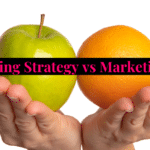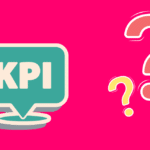Marketing is the lifeblood of any successful business. It’s the fuel that powers your brand’s growth and ensures its continued success. It’s the art of telling your story in a way that resonates with your audience, and the science of finding and converting potential customers.
But with so many tools and techniques at your disposal, how do you navigate the complex world of marketing? How do you make sure that your efforts are effective and efficient?
In this article, we’ll give you a top-level overview for anyone looking to get into this incredible field ( well, I might be a tad biased here)
Let’s start with the basics.
The Basics of Marketing

Marketing is a crucial component of any business. It’s a strategic process that involves creating, communicating, delivering, and exchanging offerings that have value for customers, clients, partners, and society at large.
Basically, It’s about understanding your target market and crafting messages that resonate with them.
Sounds simple.
Well, it can be, but we humans love making simple things complex!
Anyway.
At its core, marketing is about building relationships. It’s not just about selling a product or service, but about creating an emotional connection with your audience.
Furthemore, successful marketing helps you build brand loyalty, increase customer retention, and ultimately, drive sales.
Firstly, I’d love to run you through something known as the 4 Ps.

Understanding the 4 Ps of Marketing
The 4 Ps of marketing, also known as the marketing mix, is a fundamental concept that outlines the key components of a marketing strategy. The 4 Ps are product, price, place, and promotion, and they form the foundation of any marketing plan.
Let’s run through them
1. Product
The first P of the marketing mix is product. This refers to the actual goods or services that your business offers. When considering the product aspect of your marketing strategy, you should focus on:
- Product design and features: What are the unique features of your product? How does it differ from the competition?
- Quality: Ensuring that your product is of high quality and meets the needs of your target market.
- Branding: How you want your product to be perceived by consumers.
- Packaging and labeling: How your product is presented to consumers.
2. Price
The second P of the marketing mix is price. This refers to the amount of money that customers are willing to pay for your product or service. When setting the price for your product, consider:
- Costs: What are your production, marketing, and overhead costs?
- Competitors’ prices: How much are your competitors charging for similar products?
- Consumer demand: How much are consumers willing to pay for your product?
- Profit margin: How much profit do you want to make from each sale?
3. Place
The third P of the marketing mix is place. This refers to the channels and locations through which your product is made available to customers. Consider:
- Distribution channels: Where and how will your product be sold? (e.g., retail stores, online marketplaces, direct sales)
- Geographic coverage: What regions or areas will your product be available in?
- Inventory management: How will you manage and control the flow of products to different locations?
4. Promotion
The final P of the marketing mix is promotion. This refers to the methods and tactics you use to communicate the benefits of your product to your target market. Consider:
- Advertising: What types of advertising will you use? (e.g., online, print, television, radio)
- Sales promotion: What special offers or discounts will you use to entice customers?
- Public relations: How will you build a positive image for your brand?
- Personal selling: How will you train and manage your sales team?
By carefully considering and managing the 4 Ps, you can create a well-rounded and effective marketing strategy.
Now, that you’ve got the Ps sorted, let’s explore something known as the 4 Cs.
Understanding the 4 Cs of Marketing

The 4 Cs of marketing is a modern-day marketing mix that focuses on customer needs and preferences. The 4 Cs are customer, cost, convenience, and communication.
1. Customer
The first C of the marketing mix is customer. This refers to understanding the needs and wants of your target market. When considering the customer aspect of your marketing strategy, you should focus on:
- Segmentation: Dividing your target market into distinct groups based on common characteristics.
- Targeting: Selecting the most profitable and relevant segment to focus your marketing efforts on.
- Positioning: Establishing a unique and desirable position for your product in the minds of your target market.
- Customer satisfaction: Ensuring that your product or service meets or exceeds customer expectations.
2. Cost
The second C of the marketing mix is cost. This refers to the total cost of ownership for the customer, including the price of the product, any additional fees, and the cost of switching to a different product or service. When considering the cost aspect of your marketing strategy, you should focus on:
- Pricing strategy: Setting the right price for your product or service that is competitive and aligns with the perceived value.
- Lifetime value: Understanding the long-term value of a customer and ensuring that your pricing strategy takes this into account.
- Cost reduction: Finding ways to reduce production costs, which can lead to lower prices for customers.
3. Convenience
The third C of the marketing mix is convenience. This refers to the ease of purchasing and using your product or service. When considering the convenience aspect of your marketing strategy, you should focus on:
- Distribution channels: Making your product available in the right places and at the right times for your target market.
- Accessibility: Ensuring that your product or service is easily accessible to all potential customers, regardless of physical limitations.
- User experience: Designing your product or service to be easy to use and providing excellent customer support.
4. Communication
The final C of the marketing mix is communication. This refers to the methods and tactics you use to communicate with your target market and build relationships. When considering the communication aspect of your marketing strategy, you should focus on:
- Content marketing: Creating valuable and relevant content that educates and engages your target market.
- Social media: Using social media platforms to connect with your audience and build brand awareness.
- Customer service: Providing excellent customer service and addressing customer concerns promptly.
The general idea is that by focusing on the 4 Cs, you can create a customer-centric marketing strategy that resonates with your target market and drives success for your business.
Cool.
Now you’ve got your head around a couple of highly essential frameworks, let’s explore some common strategies and tactics in this “game.”
Marketing Strategies and Tactics

Traditional Marketing vs. Digital Marketing
Marketing is an ever-evolving field, and in today’s digital age, businesses have more options than ever before when it comes to reaching their target audience.
In fact, the options seem to be endless and fairly overwhelming these days.
So, traditional marketing and digital marketing are two broad categories of marketing that each have their own strengths and weaknesses.
Let’s start with the old-school, traditional way of doing things.
Traditional Marketing
Traditional marketing refers to any form of marketing that existed before the rise of the internet and digital technologies. This includes print advertising, television and radio commercials, direct mail, billboards, and more. Some of the key characteristics of traditional marketing include:
- One-way communication: it typically involves one-way communication, where the business sends its message to the audience without much opportunity for interaction.
- Physical presence: relies on physical materials, such as brochures, flyers, or billboards, to convey the message.
- Local reach: limited to a local or regional audience, well except if placed at an airport!
- Tangible results: can provide tangible results, such as the number of flyers distributed or the reach of a billboard, although this can be hard to quantify.
Now, let’s go digital and look into some modern ways of marketing.
Digital Marketing
Digital marketing encompasses all forms of marketing that occur online or through digital channels. This includes search engine optimization (SEO), social media marketing, email marketing, pay-per-click (PPC) advertising, and more. Some of the key characteristics of digital marketing include:
- Two-way communication: allows for two-way communication, where businesses can interact with their audience and receive feedback in real-time, think ad clicks, surveys, polls or emails.
- Virtual presence: relies on virtual platforms, such as websites, social media, or email, to convey the message.
- Global reach: has the potential to reach a global audience, breaking down geographical barriers quickly and efficiently.
- Data-driven results: One of the best things about digital marketing is that it provides real-time data and analytics that can be used to measure the success of campaigns and make informed decisions.
There you have it. Both traditional and digital marketing have their own strengths and weaknesses, and many effective marketing strategies can combine elements of both. While traditional marketing can be effective for reaching local audiences and providing tangible results, digital marketing offers a wider reach, real-time interaction, and data-driven insights.
So, you’ve got something to sell? Let’s look at how you can get started
How to Build a Strong Marketing Plan
Creating a strong marketing plan is essential for any business looking to grow and succeed. A well-thought-out plan acts as a roadmap, guiding your business in the right direction and ensuring that your marketing efforts are focused and effective.
Here are some key steps to help you build a strong marketing plan:
1. Define Your Objectives
Start by clearly defining your marketing objectives. What do you want to achieve with your marketing efforts? Your objectives should be specific, measurable, achievable, relevant, and time-bound (SMART). Examples of marketing objectives could include increasing brand awareness, generating leads, or driving sales.
2. Know Your Target Audience
Understanding your target audience is crucial for crafting a successful marketing plan. Who are your ideal customers? What are their needs, preferences, and pain points? Conduct market research to gather data and insights that will help you create buyer personas and tailor your marketing strategies to your audience.
3. Analyze Your Competition
Competitive analysis is an important step in building a marketing plan. Identify your main competitors and analyze their strengths, weaknesses, strategies, and market positioning. This will help you differentiate your business and develop a unique value proposition that resonates with your target audience.
You can learn a lot from your competitors ( or potential competitors) in fact, reverse engineering what is working for them is one of my favorite ways to learn what works!
4. Develop Your Unique Value Proposition
Your unique value proposition (UVP) is what sets your business apart from the competition and gives customers a compelling reason to choose your products or services. Your UVP should be clear, concise, and focused on solving your target audience’s pain points or fulfilling their needs in a way that your competitors can’t.
5. Choose Your Marketing Channels and Tactics
Select the marketing channels and tactics that will help you reach your target audience and achieve your objectives. This may include a mix of online and offline strategies such as social media marketing, content marketing, email marketing, search engine optimization (SEO), paid advertising, events, and more.
6. Set Your Budget
Determine your marketing budget and allocate resources to different marketing activities based on their potential return on investment (ROI). It’s important to be realistic and flexible with your budget, especially when testing new marketing strategies.
7. Create a Marketing Calendar
A marketing calendar is a valuable tool for organizing your marketing activities and ensuring that they are executed in a timely manner. It helps you plan and schedule your campaigns, promotions, and content distribution effectively.
8. Monitor, Measure, and Adjust
Once your marketing plan is in motion, it’s essential to monitor and measure the performance of your marketing activities. Use key performance indicators (KPIs) to track your progress and make data-driven decisions. If you find that certain strategies are not delivering the desired results, be ready to adjust your plan and tactics accordingly.
Remember that a marketing plan is not set in stone. It should be a dynamic document that evolves with your business and the changing market conditions. Regularly review and update your plan to ensure that it remains relevant and effective in helping you achieve your marketing objectives.
Now, let’s dive into some specifics of digital marketing.
Digital Marketing and Its Components

What Is Digital Marketing?
Digital marketing is the promotion of products or services using digital technologies, mainly on the internet, but also including mobile phones, display advertising, and any other digital medium.
It encompasses a wide range of marketing activities, such as search engine optimization (SEO), social media marketing, content marketing, email marketing, and more.
Let’s check out some key components.
Key Components of Digital Marketing
Digital marketing is a multifaceted discipline that includes various components, each serving a different purpose and playing a critical role in a brand’s online presence. Some of the key components of digital marketing include:
1. Search Engine Optimization (SEO)
SEO is the process of optimizing a website to rank higher in search engine results pages (SERPs). It involves improving the website’s content, technical aspects, and authority to increase its visibility and organic traffic from search engines like Google.
2. Content Marketing
Content marketing focuses on creating and distributing valuable, relevant, and consistent content to attract and retain a clearly defined audience. It aims to drive profitable customer action by providing information and solutions that align with the audience’s needs and interests.
3. Social Media Marketing
Social media marketing involves promoting a brand and its products or services on social media platforms. This is done by creating and sharing content that encourages user engagement, such as likes, shares, and comments.
4. Email Marketing
Email marketing is the practice of sending targeted messages to a brand’s customers or potential customers via email. These messages often include promotional content, product announcements, and special offers.
5. Pay-Per-Click (PPC) Advertising
PPC advertising is a model in which advertisers pay a fee each time one of their ads is clicked. It is a way of buying visits to a website, rather than attempting to “earn” those visits organically.
6. Influencer Marketing
Influencer marketing involves partnering with influential individuals on social media to promote a brand’s products or services. These influencers have a large and engaged following, making them valuable for reaching new audiences and driving sales.
7. Affiliate Marketing
Affiliate marketing is a performance-based marketing strategy in which a business rewards affiliates for each customer or lead brought in by the affiliate’s marketing efforts. It’s a way for businesses to expand their reach and generate sales without spending on traditional advertising.
8. Marketing Automation
Marketing automation refers to the use of software and technology to automate repetitive marketing tasks and workflows. This can include email scheduling, social media posting, and customer relationship management (CRM).
These components work together to create a comprehensive digital marketing strategy. By leveraging the strengths of each component and integrating them into a cohesive plan, businesses can effectively connect with their target audience, drive traffic, and achieve their marketing goals.
Like fashion, cars, and just about most things in life, you will find that there are trends. As I type this, Tik-Tok influencer marketing is huge! Years ago PPC was the new kid on the block!
Now AI, has become massively mainstream and offers unparalleled opportunities for marketers.
The Role of AI in Marketing

Artificial Intelligence (AI) has revolutionized the way businesses approach marketing. It is an invaluable tool that allows businesses to streamline their marketing efforts, make data-driven decisions, and create personalized experiences for their customers.
It is transforming various aspects of marketing, from understanding consumer behavior to optimizing ad campaigns and everything in between.
Let’s explore the role of AI in marketing and how it’s shaping the future of the industry.
How AI is Transforming Marketing
1. Data Analysis and Insights
AI excels at analyzing large sets of data quickly and efficiently. This allows marketers to gain valuable insights into consumer behavior, preferences, and trends. AI-powered tools can process data from various sources, such as social media, website traffic, and sales figures, to provide a comprehensive view of the market landscape.
2. Personalization
One of the most significant impacts of AI in marketing is its ability to create personalized experiences for customers. AI algorithms can analyze customer data and predict individual preferences, allowing businesses to tailor their marketing messages, product recommendations, and promotions to each customer’s unique needs and interests.
3. Chatbots and Customer Service
AI-driven chatbots have become a common feature on websites and social media platforms. These chatbots can engage with customers in real-time, answer questions, and provide assistance. They offer a more efficient and cost-effective way for businesses to handle customer inquiries and provide a better customer experience.
4. Content Creation and Curation
AI has also made inroads in content creation. AI-powered tools can generate written content, such as news articles or product descriptions, based on predefined parameters. Additionally, AI can curate content by analyzing vast amounts of data to identify the most relevant and engaging content for a specific audience.
5. Predictive Analytics
AI enables marketers to use predictive analytics to forecast future trends and outcomes. By analyzing historical data and identifying patterns, AI can help businesses make informed decisions about product launches, pricing strategies, and marketing campaigns.
6. Ad Targeting and Optimization
AI plays a crucial role in digital advertising by improving ad targeting and optimization. AI algorithms can analyze user behavior and demographics to target ads to the most relevant audiences. Additionally, AI can optimize ad campaigns in real-time, adjusting factors like ad placement, timing, and creative elements to maximize their effectiveness.
Future Trends and Applications of AI in Marketing
But this is only the beginning, things are moving so fast at the moment and as AI continues to advance, its role in marketing is expected to grow even more significant.
Some future trends and applications of AI in marketing include:
- Voice Search and AI Assistants: With the rise of voice-activated AI assistants like Siri, Alexa, and Google Assistant, businesses will need to optimize their content for voice search and find new ways to engage with customers through these platforms.
- AI-Generated Creativity: AI is increasingly being used to generate creative content, such as music, art, and even advertising copy. This trend is likely to continue, with AI becoming a valuable tool for marketers in creating compelling and original content.
- Hyper-Personalization: this will enable businesses to take personalization to the next level by delivering highly customized experiences for each individual customer. This could include personalized product recommendations, pricing, and even tailored marketing messages.
- Ethical and Regulatory Considerations: As AI becomes more integrated into marketing, there will be a growing need to address ethical and regulatory considerations. Marketers will need to ensure that AI is used in a transparent and responsible manner, respecting privacy and avoiding bias in decision-making.
AI is a powerful force that is reshaping the marketing landscape.
It’s not just a buzzword; it’s a transformative technology that is changing the way businesses understand and connect with their customers.
As it continues to evolve, it will undoubtedly play a central role in the future of marketing, driving innovation and helping businesses thrive in an increasingly competitive and data-driven world.

Final Thoughts
Marketing is the engine that drives business growth, and mastering its art and science is crucial in today’s competitive landscape.
From understanding the fundamental principles of the 4 Ps and 4 Cs to delving into the world of digital marketing and AI, there’s a wealth of knowledge and tools at your disposal to elevate your marketing game.
By honing your skills in strategic planning, brand storytelling, and data-driven decision-making, you can create impactful marketing campaigns that resonate with your audience and drive real results.
So, embrace the ever-evolving nature of marketing, stay curious, and never stop learning, because the journey to mastering the art of marketing is a rewarding one that can truly transform your business.
Interested in learning more about marketing from a true legend and one of my idols? Check out the video below:
Frequently Asked Questions

What is marketing and its importance?
Marketing is the process of promoting, selling, and distributing a product or service to potential customers. It is essential for businesses as it helps them reach their target audience, increase brand awareness, and ultimately drive sales and revenue.
What are the main concepts of marketing?
The main concepts of marketing revolve around the 4 Ps: product, price, place, and promotion. These elements are crucial for creating a successful marketing strategy that meets the needs of customers and generates profits for the business.
What are some common marketing strategies?
Some










